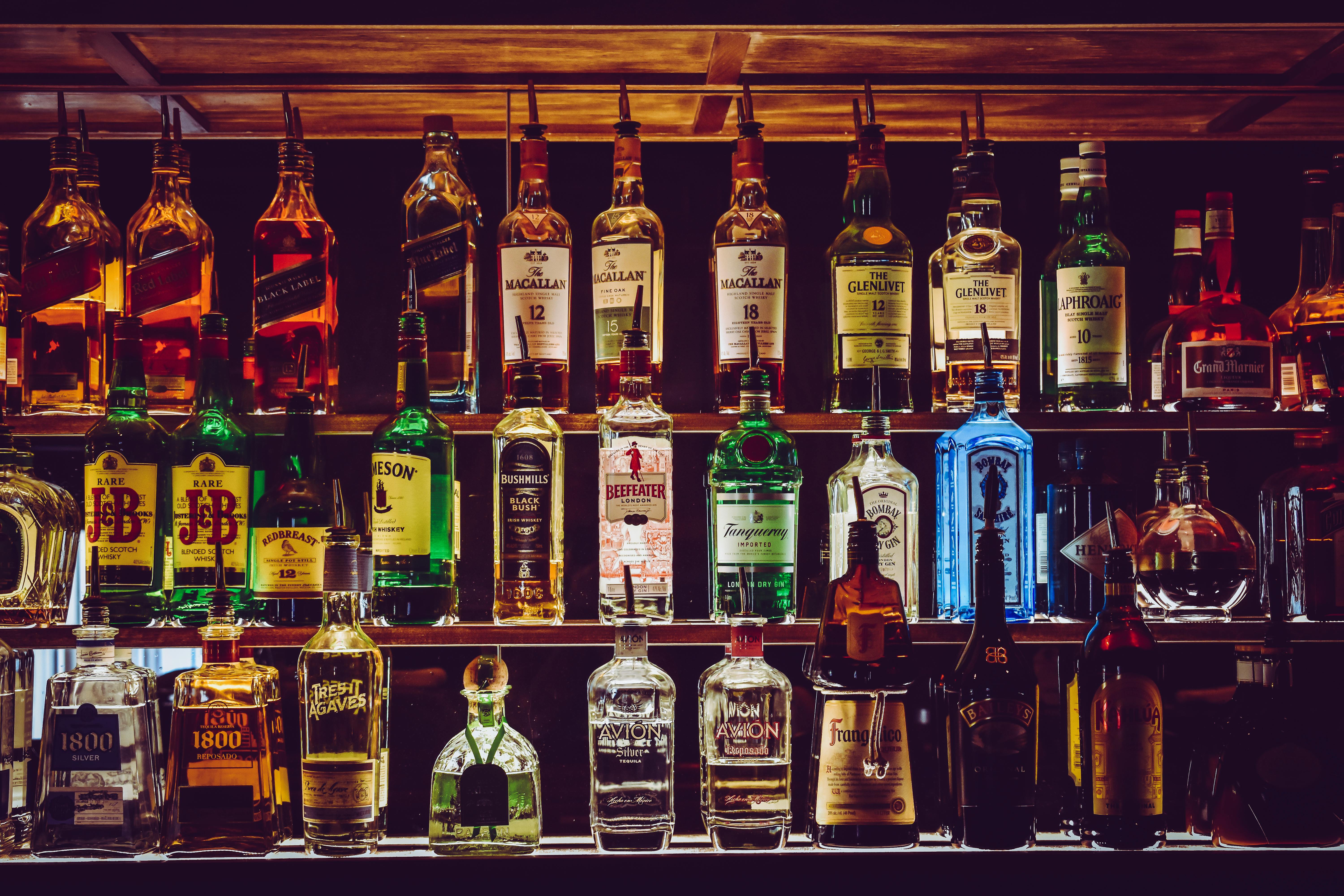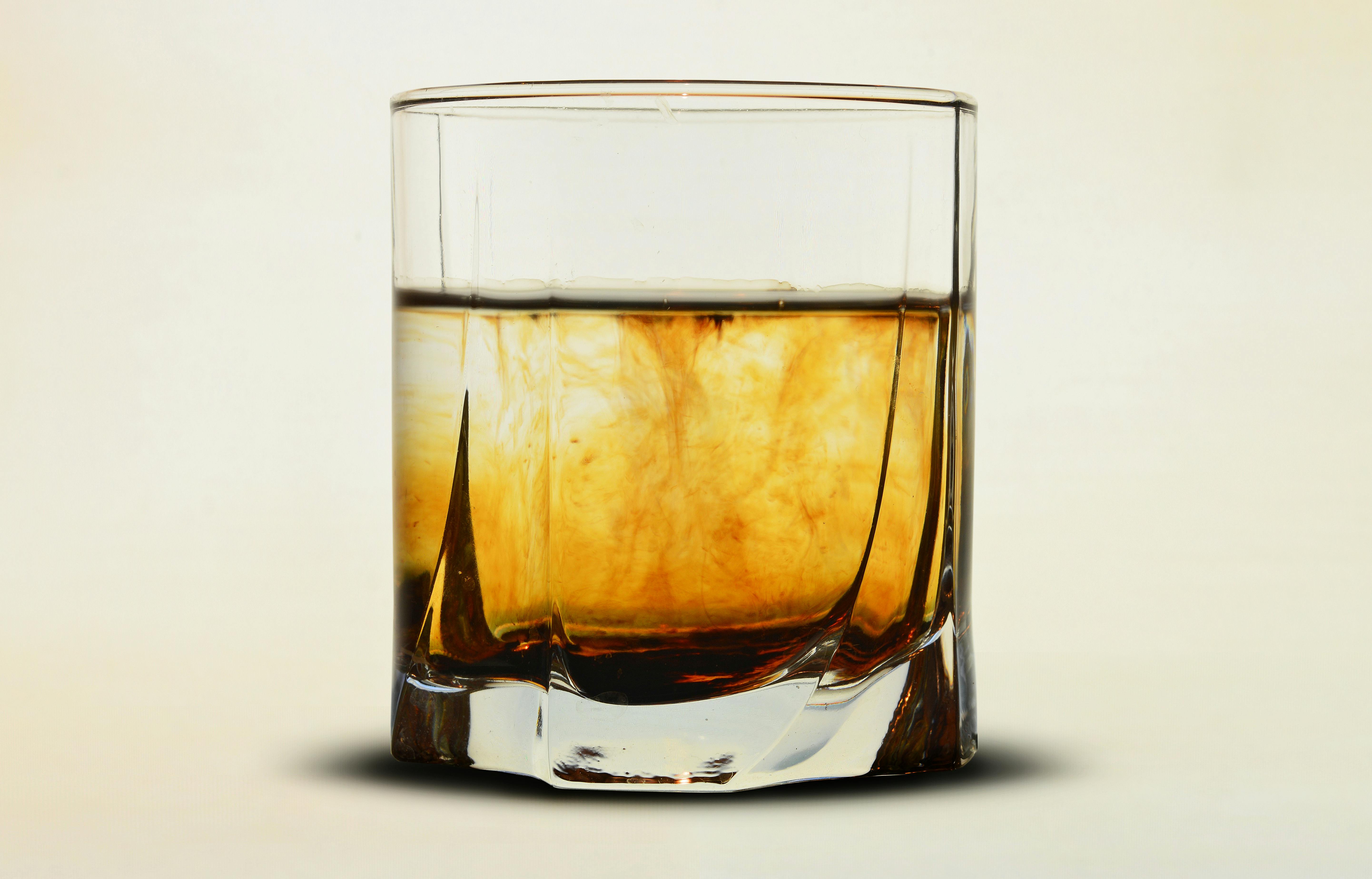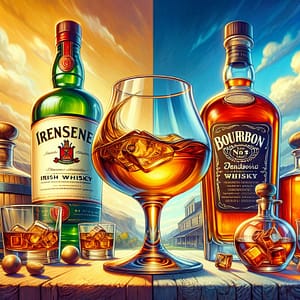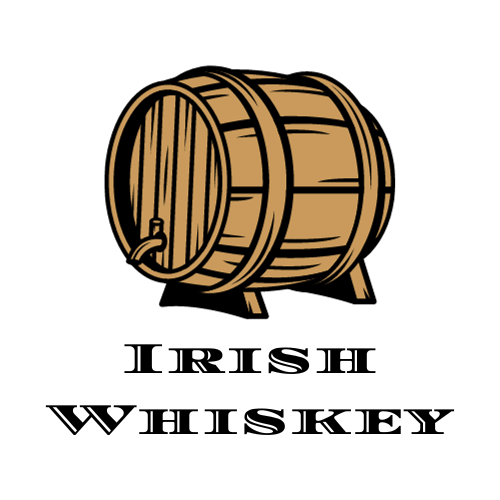In the world of spirits, irish whiskey vs bourbon are two iconic and highly celebrated choices. Both boasting distinctive flavors, they hold a special place on the shelves of whiskey connoisseurs and enthusiasts alike.
However, understanding the differences between these two beloved spirits can be as intriguing as enjoying a glass of each. Join us as we embark on a journey to explore the clash of distinctive flavors in the ultimate showdown between Irish Whiskey and Bourbon. Cheers to a taste adventure like no other!
Background and History of Irish Whiskey
Origins of Irish Whiskey
Irish whiskey has a rich and fascinating history that dates back centuries. The origins of Irish whiskey can be traced back to the 12th century, when Irish monks introduced the distillation process to Ireland. These monks had learned the art of distillation from the Moors during their travels to the Mediterranean. They brought this knowledge back to Ireland, where they began producing uisce beatha, which means “water of life” in Gaelic. Over time, uisce beatha transformed into what we now know as Irish whiskey.
Traditional Irish Whiskey Production
Traditional Irish whiskey production is known for its triple distillation process, which sets it apart from other whiskey styles. This process involves distilling the whiskey three times in copper pot stills. The use of copper helps to remove impurities and create a smoother, more refined spirit. Additionally, Irish whiskey is typically made using a combination of malted and unmalted barley, giving it a distinct flavor profile.
Evolution of Irish Whiskey
Irish whiskey has seen its fair share of ups and downs throughout history. In the 19th century, Irish whiskey was the most popular spirit in the world, with distilleries scattered across Ireland. However, a combination of factors, including political unrest, prohibition, and the rise of Scotch whisky, led to a decline in the Irish whiskey industry. Many distilleries closed their doors, and it wasn’t until the late 20th century that Irish whiskey began to make a comeback. Today, Irish whiskey is experiencing a resurgence, with new distilleries opening up and a renewed interest in this unique style of whiskey.
Background and History of Bourbon
Origins of Bourbon
Bourbon, on the other hand, has its origins in the United States. It is believed to have been first produced in the late 18th century in what is now known as Kentucky. The exact origins of the name “bourbon” are debated, but it is widely believed to have been named after Bourbon County, Kentucky. Bourbon was initially made from a mixture of corn, rye, and barley grains, and it quickly gained popularity among American settlers.
Regulations and Requirements for Bourbon
Bourbon is subject to strict regulations and must meet specific requirements to be classified as such. According to U.S. law, bourbon must be made from a mash bill containing at least 51% corn. It must also be aged in new, charred oak barrels and distilled to no more than 160 proof, among other regulations. These regulations help to maintain the unique characteristics and quality of bourbon.
Development of Bourbon Industry
The bourbon industry has experienced a resurgence in recent decades, with a growing demand for this distinct American spirit. Once considered a niche product, bourbon has now become a global phenomenon. Many small craft distillers have emerged, joining the ranks of established bourbon producers. This growth has resulted in an increased variety of bourbon expressions, showcasing the creativity and craftsmanship of distillers across the United States.

This image is property of images.pexels.com.
Raw Materials and Distillation Process
Ingredients Used in Irish Whiskey Production
Irish whiskey is typically made using a combination of malted and unmalted barley. The use of unmalted barley gives Irish whiskey a lighter and smoother flavor profile compared to other whiskey styles. In some cases, distillers also incorporate other grains like corn or wheat into the mash bill when producing bourbon. Furthermore, producers of Irish whiskey opt to distill it three times using copper pot stills, which contributes to the creation of a cleaner and more delicate spirit.
Ingredients Used in Bourbon Production
Bourbon, on the other hand, must be made from a mash bill containing at least 51% corn. The remaining portion of the mash bill usually consists of grains such as barley, rye, or wheat. The high corn content gives bourbon its signature sweet and rich flavor profile. Bourbon is typically distilled using column stills, which allow for a higher alcohol content and a more robust flavor.
Comparison of Distillation Processes
The distillation process plays a significant role in shaping the flavors of both Irish whiskey and bourbon. Irish whiskey’s triple distillation process in copper pot stills produces a smoother and more delicate spirit. On the other hand, bourbon’s use of column stills and higher proof distillation contributes to its bolder and more robust flavor profile. The choice of distillation method and the types of grains used contribute to the distinctive characteristics of each style of whiskey.
Also Check: Who Made The First Whiskey In America?
Flavor Profiles
Distinctive Flavors of Irish Whiskey
Irish whiskey is known for its light and approachable flavor profile. It often exhibits notes of honey, vanilla, floral, and fruit flavors. The triple distillation process and the use of unmalted barley contribute to its smoothness and delicate character. Additionally, Irish whiskey is often described as having a creamy mouthfeel, making it a pleasant and easy-drinking spirit.
Distinctive Flavors of Bourbon
Bourbon, on the other hand, is characterized by its rich and full-bodied flavor. The higher corn content in the mash bill gives bourbon its sweet and caramel-like notes. Bourbon also often features flavors of oak, vanilla, spice, and sometimes even hints of smokiness. The use of charred oak barrels during the aging process adds depth and complexity to the flavor profile of bourbon.
Factors Influencing Flavor Differences
The differences in flavor profiles between Irish whiskey and bourbon can be attributed to several factors. The choice of grains in the mash bill, the distillation process, and the aging techniques all play a role in shaping the flavors of each whiskey style. Additionally, the use of different types of barrels, such as charred oak for bourbon and a combination of oak and other cask types for Irish whiskey, also contribute to the distinct flavors found in each spirit.

This image is property of images.pexels.com.
Maturation and Aging
Maturate Process in Irish Whiskey
Maturation is a crucial step in the production of both Irish whiskey and bourbon. Producers typically age Irish whiskey in a combination of oak barrels, including ex-bourbon barrels, sherry casks, and sometimes even wine casks. The aging process allows the whiskey to interact with the wood, resulting in the development of complex flavors over time. The legal requirement for Irish whiskey to be aged for a minimum of three years ensures that it has time to mature and develop its unique characteristics.
Maturation Process in Bourbon
Bourbon, on the other hand, must be aged in new, charred oak barrels. The aging process gives bourbon its rich color, smooth texture, and distinctive flavors. The climate and conditions in the aging warehouses also play a role in the maturation process, as the fluctuations in temperature and humidity can affect the whiskey’s interaction with the wood. By law, bourbon must be aged for a minimum of two years, although many premium expressions age it for much longer.
Impact of Aging on Flavors
Both Irish whiskey and bourbon undergo significant flavor changes during the aging process. As the whiskey interacts with the wood, it absorbs flavors and compounds from the barrels. This results in the development of flavors such as oak, vanilla, caramel, and spice. Additionally, the aging process allows the whiskey to mellow and become smoother, enhancing the overall drinking experience. The length of aging and the type of barrels used contribute to the unique flavors and characteristics found in each whiskey style.
Production Regions and Brands
Prominent Irish Whiskey Brands
Ireland is home to several well-known and respected whiskey brands. Jameson, Bushmills, Teeling, and Redbreast are just a few examples of the prominent Irish whiskey brands that have gained international recognition. Each brand brings its own unique style and flavor profile to the table, showcasing the diversity and craftsmanship of Irish whiskey.
Prominent Bourbon Brands
When it comes to bourbon, there is no shortage of well-established brands to choose from. Maker’s Mark, Jim Beam, Buffalo Trace, and Woodford Reserve are just a few of the prominent bourbon brands that have become synonymous with the spirit. These brands have helped shape the bourbon industry and have gained a loyal following of whiskey enthusiasts around the world.
Notable Differences in Production Regions
While both Irish whiskey and bourbon have their respective production regions, their geographical locations play a role in shaping the flavors and characteristics of each spirit. The unique climate, water sources, and terroir of Ireland influence the production of Irish whiskey, contributing to its smooth and approachable nature. Kentucky, the heartland of bourbon production, boasts its own distinct climate and limestone-rich water, both of which experts believe contribute to the bold and rich flavors that characterize bourbon.
Cultural Significance and Consumption
Irish Whiskey in Irish Culture
This holds a significant place in Irish culture and heritage. Irish whiskey has deep ties to Irish history, as the craft of whiskey distillation has been traditionally passed down through generations. Celebrations and gatherings often associate it, and whiskey enthusiasts commonly enjoy it neat, on the rocks, or as an ingredient in traditional Irish beverages like Irish coffee. The resurgence of Irish whiskey in recent years has also sparked a sense of pride and appreciation for this iconic spirit among the Irish people.
Bourbon in American Culture
International Consumption
Both Irish whiskey and bourbon have gained popularity on the international stage in recent years. Their distinct flavors and rich histories have captured the attention of whiskey lovers worldwide. Irish whiskey has seen a surge in popularity, particularly in Europe and North America. Bourbon, on the other hand, has experienced significant growth in global demand, with consumers in countries such as Japan, Australia, and the United Kingdom embracing this unique American spirit.
Food Pairings and Cocktails
Traditional Food Pairings with Irish Whiskey
Irish whiskey pairs well with a variety of food, thanks to its smooth and approachable flavor profile. Traditional Irish dishes such as Irish stew, smoked salmon, and soda bread complement the flavors of Irish whiskey beautifully. Additionally, cheeses like Dubliner or Cashel Blue, as well as dark chocolate, can be excellent accompaniments to a glass of Irish whiskey.
Classic Bourbon Cocktails
Bourbon is a versatile spirit that lends itself well to a wide range of cocktails. Classic bourbon cocktails include the Mint Julep, the Old Fashioned, and the Whiskey Sour. These cocktails showcase the unique flavors and characteristics of bourbon, allowing you to enjoy its rich and complex taste in a refreshing and creative way.
Unique Pairings and Cocktail Recipes
For those looking to explore the world of whiskey pairings and cocktails, the possibilities are endless. Pairing Irish whiskey with dishes like seafood, grilled meats, or even spicy cuisine can create exciting flavor combinations. Experimenting with bourbon in cocktails, such as the Boulevardier, the Whiskey Smash, or even a bourbon-based twist on a classic cosmopolitan, can offer a new and innovative drinking experience.

Source: TheTechBrain AI
Price and Availability
Irish Whiskey Price Range
The price range for Irish whiskey can vary depending on various factors, including the brand, the age, and the rarity of the expression. You can typically find entry-level Irish whiskeys in the range of $20 to $40, while older and more limited editions can reach several hundred dollars or even higher.
Bourbon Price Range
Similar to Irish whiskey, the price range for bourbon can vary greatly. Prices for entry-level bourbons generally start around $20 to $30, with premium and limited-edition releases often commanding higher price tags. Some rare and highly sought-after bourbons can reach prices in the thousands of dollars, especially in the collector’s market.
Comparison of Availability in Different Markets
Both Irish whiskey and bourbon have gained popularity globally, leading to increased availability in various markets. While their availability may differ depending on the region, it is relatively easy to find a wide range of Irish whiskey and bourbon brands in well-stocked liquor stores and online retailers. Some unique expressions and limited releases may be more challenging to find, but the growing interest in both Irish whiskey and bourbon has made them more accessible to whiskey enthusiasts around the world.
FAQs
Q: What are the legal requirements for a whiskey to be considered Irish?
For the spirit to be considered Irish whiskey, it must meet several legal requirements. Irish whiskey regulations dictate that producers must distill and age the whiskey in Ireland for a minimum of three years. Whiskey’s popularity reflects Americans’ deep love for this spirit.
Q: Is bourbon always made in the United States?
Q: Can Irish whiskey and bourbon be used interchangeably in cocktails?
Irish whiskey and bourbon have distinct flavor profiles, so they may not always be interchangeable in cocktails. However, depending on the specific recipe and the desired flavor profile, one can substitute Irish whiskey and bourbon for one another. It’s always best to experiment and adjust the measurements to achieve the desired taste when substituting one whiskey for another in a cocktail.


